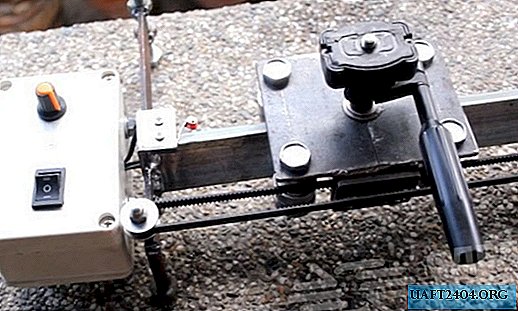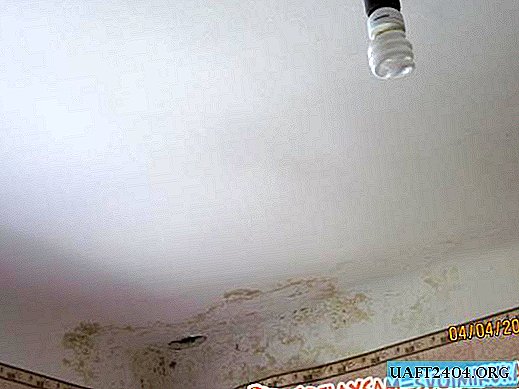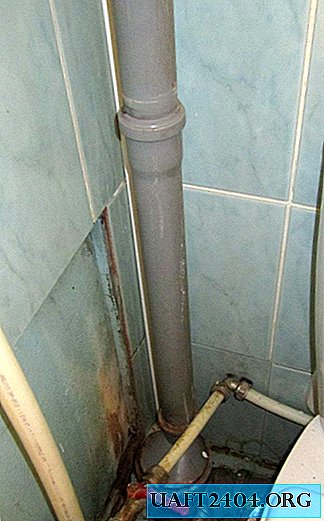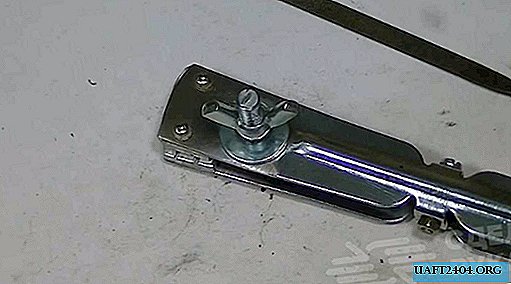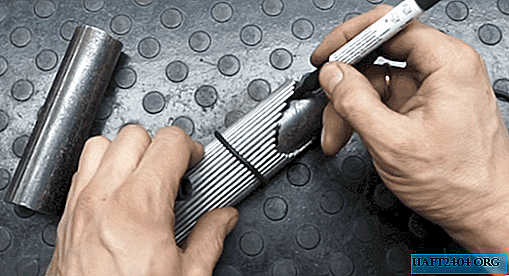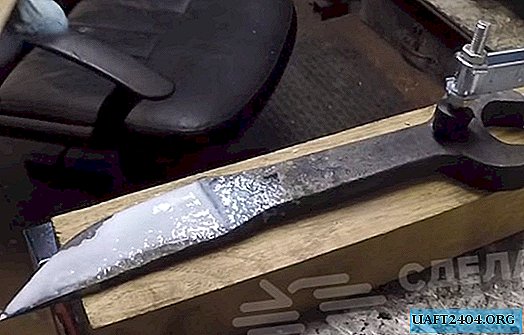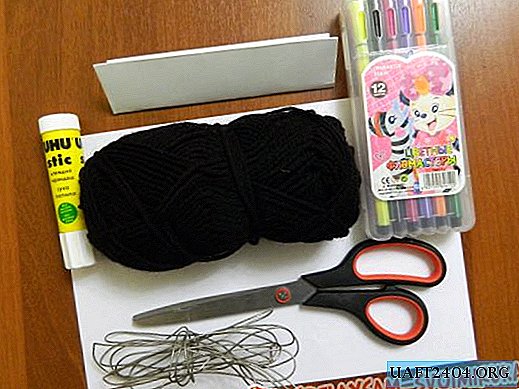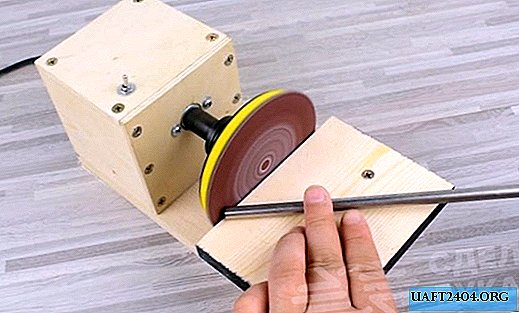Share
Pin
Tweet
Send
Share
Send
In practice, most often everything happens differently. In the store you see the already assembled version of the furniture, as a sample. Everything is collected and beautiful. As a result, after the purchase, they bring you small cardboard boxes several times smaller than the assembled cabinet, and that’s all.
Subsequently, it turns out that assembling a cabinet is a specialist's work for a fee.
Well, nothing, you think, what to assemble there, an ordinary constructor.
But after unpacking the boxes you with horror do not find any instructions or installation diagrams.
Then the question may arise, what parts and in what sequence to collect so that everything works out? Indeed, some glued parts can no longer be disassembled.
This article describes the assembly of a standard kitchen cabinet and some of the nuances in this work.
So, after unpacking the box, you can immediately see the main details from the chipboard, as well as a set of wooden rods (choppers), nails, fastening screws and a tube of PVA glue.
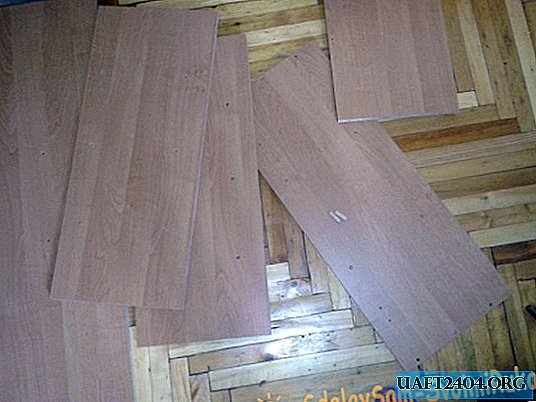


To carry out the work, you need a rather large space, so you need to choose a larger room.
We lay out all the elements of the cabinet and sort them in heaps, from larger to smaller parts.

If imagination allows, turning the details you can mentally imagine how the cabinet will look and where which element fits.
We will begin assembling this cabinet from the side panel. It will not be difficult to find it, it has four holes for mounting door mechanisms.
There are two such panels, on one of them, as you can see in the photo, are wooden choppers.

Closer to the center, you can see four non-through holes.
They serve to fasten parts with the help of these choppers.
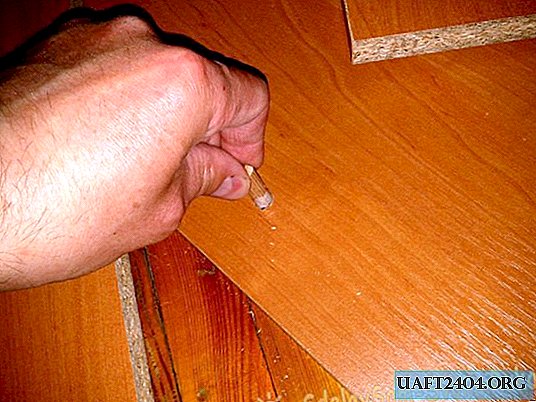
We put the part on a flat surface and generously coat with glue, both the hole itself and chopik.

Next, with the help of a hammer, gently hammer chopiki into the seats. It is better to use a mallet or, in extreme cases, an ordinary hammer, striking through a piece of rubber or rags.


There is no need to overdo it, otherwise the stem may exit from the back of the panel, breaking a piece of the part. It’s better not to finish it off, and when the upper part is planted, the stock itself will “sit down” as needed.
When all four choppers are already in place, we find in the set two small shelves with side holes and fill these holes with glue.

Next, we dock the holes with choppers on the bottom panel and connect the parts with light hammer blows. In this case, excess glue can come out, where it is immediately removed with a clean rag.


Two planted shelves look like in the photo.

Now it is time for the next detail. This panel has four seats on one side and six on the other.


As you already understood, where there are four of them will be the next connection. Six holes should face up.
I would like to recall an important point. The ends of the shelves and panels on the front side are covered with PVC tape, but not on the back. Therefore, pay attention to the fact that from the side of the door installation (front side), shelves of not closed PVC are not obtained.
With this moment, everything is clear, now we also apply glue to the four holes of the panel.


We combine the holes with choppers and evenly pressing and knocking out with a hammer, we achieve a complete docking.


We do the same procedure with stocks in the next step, only six of them.



Carefully push the next three shelves, while making sure that the lower part of the structure does not deform. Where necessary - knock out with a hammer.
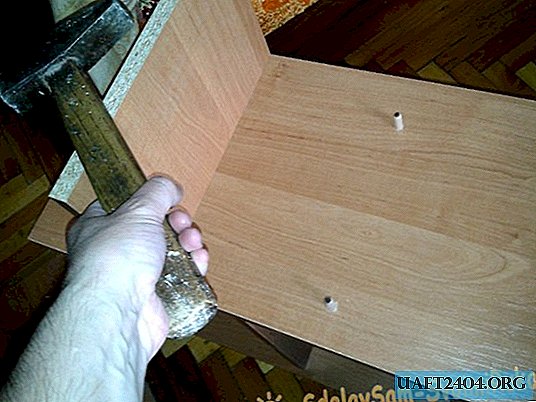


Further, the principle and details are the same, only in reverse symmetry.


When it comes to the other sidebar, you don’t need to install it. It will be the final and final structure.
Therefore, by attaching the upper two shelves, we mount the upper and lower panels. They are the longest in the set, along the edges at the ends they have one (not through) hole for the rod, and two (through) holes for clamping screws.
To fix this part, we insert the rod in the center in the lowest side panel and also in all partitions that go to this side.

Gently, pushing down, dock the bottom and all the choppers with holes on the partitions.

When it becomes clear that everything is the same, turn the box over with the panel to be connected up and pushing, we achieve maximum structural rigidity.


In addition to the connections by means of rods, on the top panel there are two through holes for the clamping screws. If everything is done correctly, the tightening screws must go exactly into the prepared openings of the partitions and fasten the structure.


This can be done using the hex key, which should be in the cabinet set.
Also, two coupling bolts are provided on the side of the side - left and right panels.

When the upper and lower panels are installed, we mount the final remaining side.
To do this, we turn the cabinet over with the working area up, and inserting choppers in the center of the remaining part in the center, we finally fasten the body of the structure, without forgetting to screw in the four clamping screws.


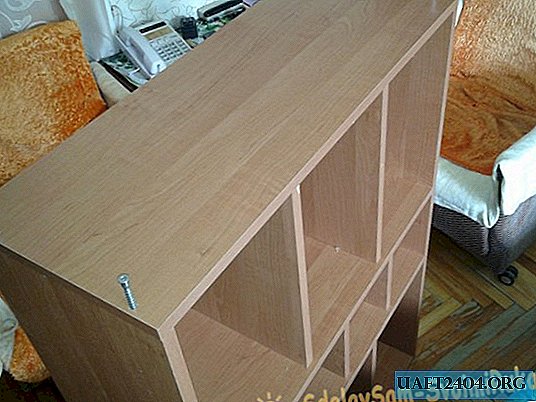
After complete assembly, it would not hurt to once again walk a rag over the remaining glue and turn the cabinet over and retighten the clamping screws again.

Now you need to leave the cabinet out of the blue for a day so that the glue finally “seizes” and gives the structure maximum rigidity.
Share
Pin
Tweet
Send
Share
Send

